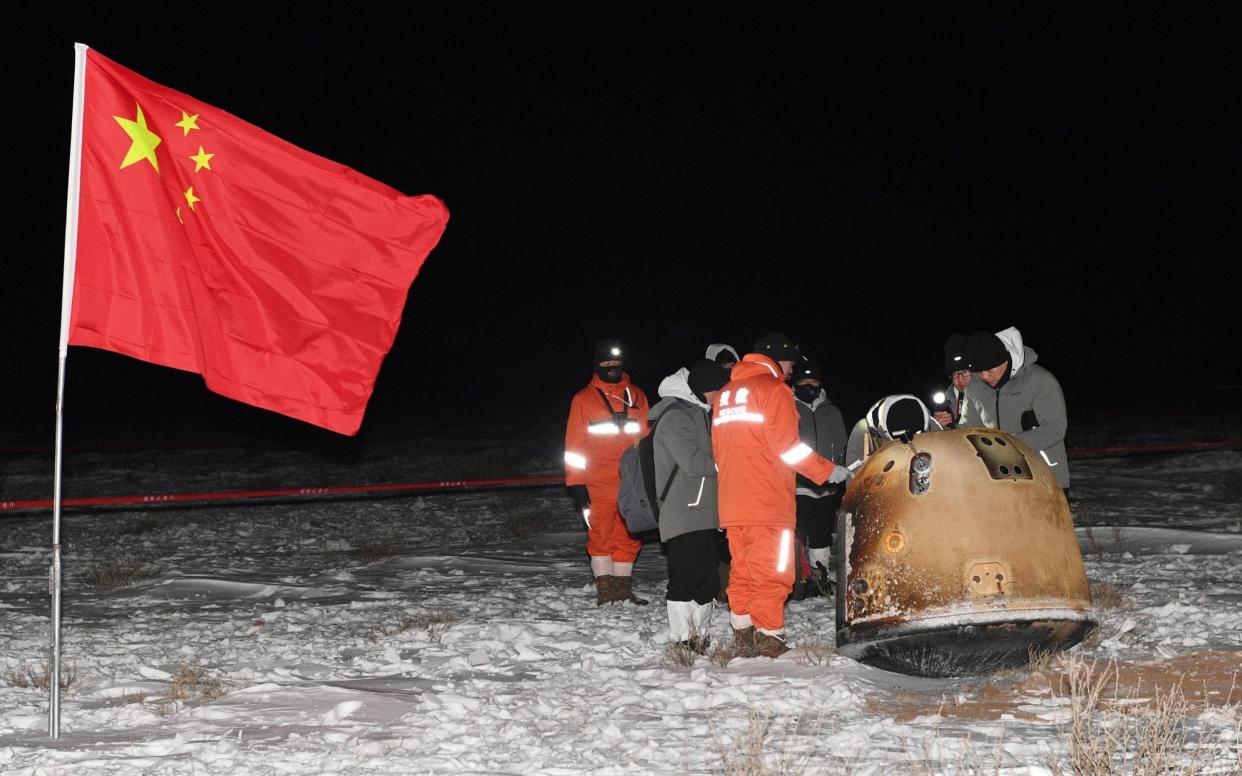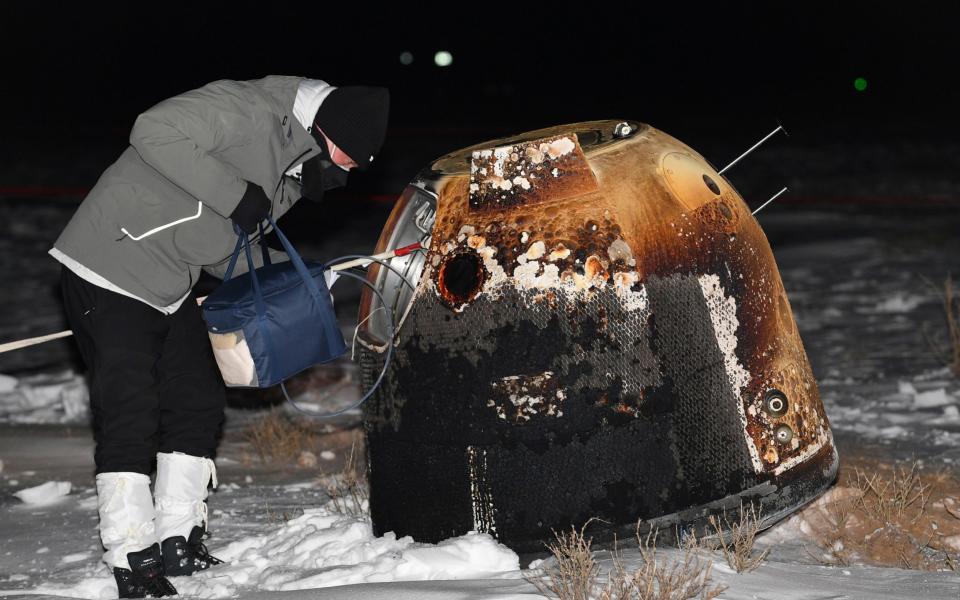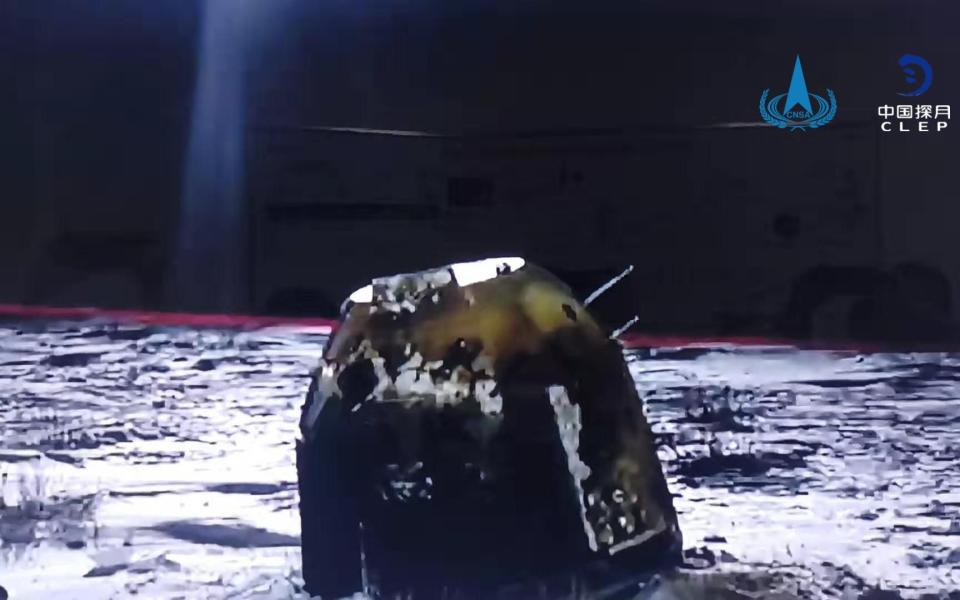Chinese capsule returns to Earth carrying moon rocks

A Chinese lunar capsule returned to Earth on Thursday with the first fresh samples of rock and debris from the moon in more than 40 years.
The capsule of the Chang’e 5 probe landed just before 2 am in the Siziwang district of the Inner Mongolia region, state media said.
The capsule earlier separated from its orbiter module and performed a bounce off Earth’s atmosphere to reduce its speed before passing through and floating to the ground on parachutes.
Two of the Chang’e 5’s four modules set down on the moon on Dec. 1 and collected about 4.4 pounds of samples by scooping them from the surface and drilling about 6 feet into the moon’s crust. The samples were deposited in a sealed container that was carried back to the return module by an ascent vehicle.
The successful mission was the latest breakthrough for China’s increasingly ambitious space programme that includes a robotic mission to Mars and plans for a permanent orbiting space station.

Chinese leader Xi Jinping, in a statement read out at the Beijing Aerospace Control Centre, called it a major achievement that marked a great step forward for China’s space industry, state-run Xinhua News Agency said.
He expressed hope that mission participants would continue to contribute towards building China into a major space power and national rejuvenation, the agency reported.
Recovery crews had prepared helicopters and off-road vehicles to home in on signals emitted by the lunar spacecraft and locate it in the darkness shrouding the vast snow-covered region in China’s far north, long used as a landing site for China’s Shenzhou crewed spaceships.
The spacecraft’s return marked the first time scientists have obtained fresh samples of lunar rocks since the former Soviet Union’s Luna 24 robot probe in 1976.

The newly collected rocks are thought to be billions of years younger than those obtained earlier by the US and former Soviet Union, offering new insights into the history of the moon and other bodies in the solar system. They come from a part of the moon known as the Oceanus Procellarum, or Ocean of Storms, near a site called the Mons Rumker that was believed to have been volcanic in ancient times.
As with the 842 pounds of lunar samples brought back by US astronauts from 1969 to 1972, they will be analysed for age and composition and are expected to be shared with other countries.
The age of the samples will help fill in a gap in knowledge about the history of the moon between roughly 1 billion and three billion years ago, Brad Jolliff, director of the McDonnell Centre for the Space Sciences at Washington University in the US.city of St. Louis, wrote in an email. They may also yield clues as to the availability of economically useful resources on the moon such as concentrated hydrogen and oxygen, Mr Jolliff said.
"These samples will be a treasure trove!" Mr Jolliff wrote. "My hat is off to our Chinese colleagues for pulling off a very difficult mission; the science that will flow from analysis of the returned samples will be a legacy that will last for many, many years, and hopefully will involve the international community of scientists."

